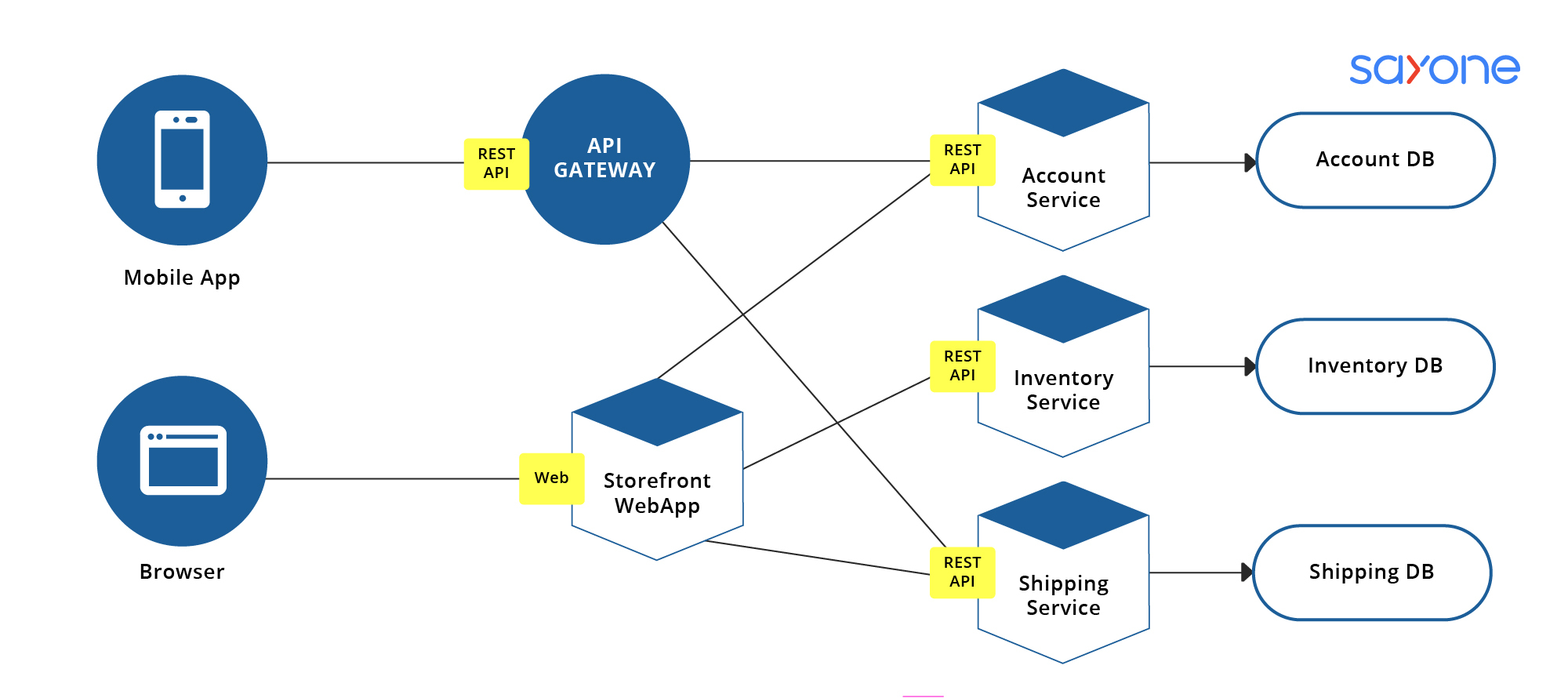
Subscribe to our Blog
We're committed to your privacy. SayOne uses the information you provide to us to contact you about our relevant content, products, and services. check out our privacy policy.

Ranju R November 3, 20218 min read

Generating table of contents...
Many individuals opted to avoid going to the stores and opted for online shopping during the pandemic. This trend is seen to be continuing and it is predicted that eCommerce sales will make up 19.2% of US retail spending in 2024.
With pandemic restrictions easing out and with the advent of the festival season, eCommerce and retail websites have started flashing ‘festive sales’. It is also true that, in many cases, websites get stuck on the "Pay and Check Out" page. If the buyer has to wait for too long on the page, they may give up buying the product altogether. This happens once too often, even in this era of 5G technology with an Internet speed of GBPS. The visitor may not visit this site another time. Though the cause may have been Internet speed, many times it is because of the traditional, monolithic nature of the eCommerce/retail application.
In short, a monolithic application is a single large application that is self-contained and tightly coupled. All the code is laid together in a single codebase. This type of architecture is easy to build but a difficult one to scale, and it lacks flexibility and speed.
Read our blog "What Kind of Challenges Can Microservices Help You Overcome".
or any request that comes in, the UI, logic, and data layers are deployed at the same time. If one of these falls short, the whole application crashes down. Any new functionality that is added requires a new node. Also, caching turns out to be less ineffective and memory consumption is large.
Microservices are made up of modular applications, with each of the services built separately and independently. The services are loosely coupled and the services are built to function autonomously. Microservices can be modeled around any business domain, and that sticks for enterprise retail too. That said, development complexities do exist, but the architecture model is high-performing, secure, reliable, and easily scalable.
Microservices can work for almost any organization. They can be especially useful for organizations with complex applications that need to be broken down into smaller, more manageable components. They can also be beneficial for organizations with a large and diverse customer base, as microservices allow for faster and more reliable updates and maintenance.
With ever-changing customer demands, mobile shopping, and shorter innovation cycles, merchants have to make sure they have their digital systems in place and an organizational support structure to allow for agility and speed.
Today, speed is the most vital competitive differentiator. Monolithic eCommerce applications still drive many large retailers’ websites around the world. However, many of them have developed bottlenecks and therefore are a hurdle against innovation. Monolith applications can be deployed, tested, and monitored more easily, but carry increased complexity and inflexibility.
Download the ebook for FREE: "How to choose the best microservices vendor and trim the costs."
Imagine building an e-commerce application that takes customer orders, verifies inventory, available credit, and ships the product to the customers. The application consists of many different components, including the input module for the store front (implementing the UI), along with other backend services for credit checking, inventory maintenance, and order shipping. This application consists of a set of independent services.

The Main Advantages that the Microservices Architecture offers for Enterprise Retail:
Microservices are designed for rapid deployment and are the best fit for companies that have their commerce systems working with a DevOps culture or in a cloud environment. This architecture helps to provide a consistent experience across different devices and platforms. For organizations functioning in the retail space, it is a good idea to move the supply chain, order fulfilment systems, etc., to the microservices architecture model.
Are you looking for best-in-class microservices developers for your organization? Call us or drop us a note.
Whereas the monolithic model has a single database, the same cannot be said with microservices. The coupling should not be as tight. That is, each service should have its own data store to use the data that it requires.
Further, the communication protocols between the various services should be kept simple (with RESTful APIs).
Yes, the industry is ready for microservices. In recent years, microservices have become increasingly popular among organizations looking to build software in a more modular and flexible way. They offer many advantages, such as scalability and flexibility, which can be beneficial to businesses of all sizes. Additionally, microservices are easier to maintain and deploy, which can lead to faster time-to-market and cost savings.
At SayOne, we design and implement microservices systems that do not have complex architectural layers, and this enables the services to deliver exceptionally fast performance. Moreover, we provide services that are significantly decoupled, allowing you to launch independent services and not end up with the usual inter-dependencies that charcterize a monolith.
We design the microservices keeping in mind all margins that are required to allow for the transitioning into the new system from your organization’s legacy architecture as well as expanding into the cloud environment. Our microservices comprise lightweight code and we provide competitive pricing options for our start-up, SMB and enterprise clients.
Our microservices are built according to the latest international security guidelines that ensure complete safety of all the data. We also ensure that we deliver the services within stipulated time deadlines and budget and we always assure a quick turnaround time for our clients. Equipped with the best infrastructure and the latest tools and technologies, our expert developers will provide you with the best microservices that are easily scalable, enabling a good ROI in the shortest period of time.
Conclusion
To derive the maximum out of microservices, your enterprise retail organization should be capable enough to organize the required resources as well as manage them appropriately. Therefore, do not decide to move your enterprise retail organization into micorservices unless you are fully ready for it.
Want to reorganize your legacy software into microservices? Talk to us today!

We're committed to your privacy. SayOne uses the information you provide to us to contact you about our relevant content, products, and services. check out our privacy policy.

About Author
Helping businesses scale-up their development teams ( Python, JavaScript, DevOps & Microservices)

We collaborate with visionary leaders on projects that focus on quality